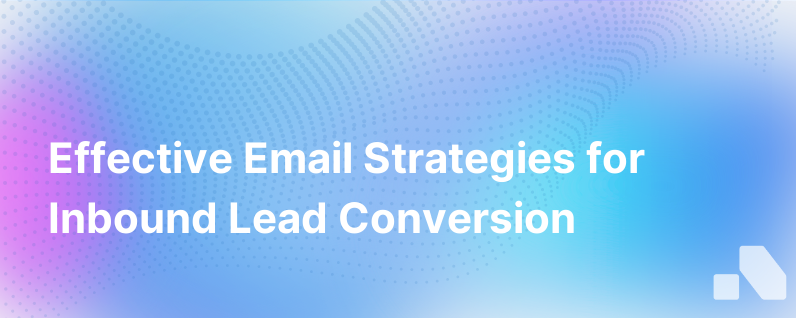
Emailing inbound leads effectively means the difference between nurturing a potential long-term customer and missing an opportunity. As the digital marketplace grows more competitive, your approach to these leads needs to be strategic, timely, and personalized. With this comprehensive guide, we dive into the nuances and provide actionable tips for converting inbound leads through effective email communication.
Understanding Inbound Leads
First, let's clarify what we mean by an 'inbound lead'. This term refers to potential customers who have expressed interest in your product or service by engaging with your brand's content, filling out a form on your website, or by reaching out through email or social media channels. This initial spark of interest signifies that these leads possess a higher intent compared to those you might reach out to via cold outreach.
Crafting The Perfect First Email
Your first email to an inbound lead is pivotal. It sets the tone for your brand and determines whether the lead progresses down the sales funnel. Here's how to make that first email count:
-
Respond Quickly Inbound leads are often categorized as 'hot leads' because they have taken the initiative to reach out. Haste is key — aim to follow up within an hour to keep the lead’s attention and demonstrate your responsiveness.
-
Personalize Your Message To show that you value their unique interest, avoid generic templates. Use their name and refer to the specific action they took to engage with your brand. If they downloaded a white paper, reference a key takeaway in your email.
-
Offer Value In your initial email, provide something of value — an insightful article, an invitation to a webinar, or a relevant case study. Provide content that corresponds with their stage in the buyer journey.
-
Keep It Straightforward Be concise and get to the point quickly. Avoid cluttering the email with too much content or too many calls-to-action (CTAs). Your goal is to move the lead to the next step, not overwhelm them.
-
Include A Strong Call-To-Action Your CTA should be clear, compelling, and easy to identify. Ideally, direct them toward a specific action, such as scheduling a consultation call or signing up for a free trial.
-
Optimize for Mobile Ensure your emails are mobile-friendly. Many professionals read their emails on the go, and you don’t want to lose their interest with formatting errors or long loading times.
Following Up Effectively
Many inbound leads won't convert after just one email. That's where follow-ups come in. Keep the following in mind when crafting follow-up emails:
-
Timing is Crucial Space out your follow-up emails to maintain interest without pestering. A second email a couple of days after the initial message strikes a balance between persistence and patience.
-
Vary Your Content Change the angle of each follow-up. Present new facts, share customer testimonials, or address common objections. Providing fresh content with each touchpoint can re-engage the lead’s interest.
-
Show Genuine Interest As you continue to communicate, show a genuine interest in their business challenges and needs. Ask thoughtful questions and listen to their responses in follow-up calls or emails.
-
Use Social Proof Incorporate case studies or testimonials in your follow-ups. Showing how your product or service has helped similar customers builds trust and credibility.
Understanding When To Pivot
Even robust follow-up sequences won't convert every lead. If after several touches there’s no response, it could be time to give the lead space. However, don't discard these contacts. They can be nurtured over time with less direct methods such as email newsletters or by adding them to retargeting campaigns.
Using Email Metrics To Hone Your Strategy
As you email and follow up with inbound leads, analyzing data is essential. Metrics like open rates, click-through rates (CTRs), and conversion rates provide valuable insights. They help you understand what's working and what's not, allowing you to adjust your approach accordingly.
Bringing In Technology
Advances in sales and marketing tools can take the grunt work out of managing inbound lead communications. For instance, platforms like Aomni can provide AI-driven insights, personalizing interaction with leads at scale. Automation tools can also ensure timely follow-ups and maintain a consistent messaging strategy.
Conclusion
Emailing inbound leads with the right strategy turns potential customers into devoted advocates for your brand. Quick response times, personalized messaging, value-driven content, strategic follow-ups, and the smart use of technology all play their part in this process. The inbox is a crowded place, but with these practices, your emails to inbound leads can stand out and lead to fruitful customer relationships.
Remember, every email is an opportunity to strengthen the relationship with a potential customer. Be thoughtful, be strategic, and above all, be human. When you approach emailing inbound leads as a conversation rather than a transaction, you set the stage for rapport-building that can yield significant dividends for your business.
Incorporate these nuanced strategies and watch as your email correspondence transforms from mere communication into a powerful engine that drives conversions and fuels your startup's growth. With each message, you’re not just reaching an inbox; you’re engaging a person. Make it count.